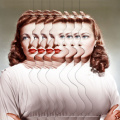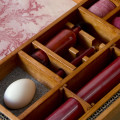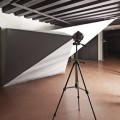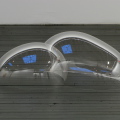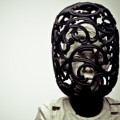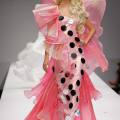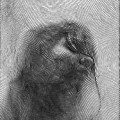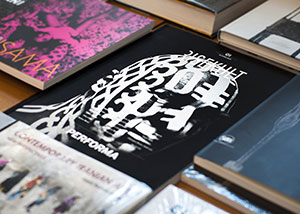We all begin as a bundle of bones lost somewhere in a desert, a dismantled skeleton that lies under the sand. It is our work to recover the parts, it is a painstaking process best done when the shadows are just right, for it takes much looking.
Clarissa Pinkola Estés
Alice’s artistic path penetrates into the depths of feminine identity in a deep and minute search, clad with silences of eyes, hands together with a nostalgia for a return to oneself.
Alice examines, gathers pictures, tears and records them in a manner that refers to the Junghian concept according to which “one needs to distinguish in order to become conscious”
“Tearing a piece of paper, a scrap of an image fills me with joy and the sensation to be able to carry with me what has caught my attention, aroused my interest, cheers me.”
“The distinction and the separation are the result of a physical and evolutionary contamination of the body and of the personal “story”. Each fragment, each bit, each part space out and differentiate one from the other. Each bit is full of history. In my work, little pieces of paper, of stories, of us overlap and become stratified inside the image filling it with different and distant experiences.”
“We are the result of bits of stories, of things, of other people, of contamination with the other”
So, fragments of bodies, torn away from the formal and glossy ideality of magazines, approach anatomical details, unknown ideograms, dusty and yellow papers with their past still have traces, memories beyond the passing of time.
“In my archives, I know and remember every single fragment of paper, of images, of a daily newspaper. The scraps I work with, before being mere stuff, have a sentimental value. I feel attached to the paper I gather, I guard them with care, I shelve and use for this or that work.”
“The life of paper, its organicity, its tendency to get dirty, to absorb the passing of time, of life. Its yellowing, its loosing its shape, its melting in water or glue. The caducity of paper (its destiny to deteriorate) is the same of human tissues”
The torn paper, piling up in layers and covers, takes the aspect of a protecting skin and gives back a coherent idea about oneself, the “Me-skin” of Anzieu.
At the same time, it fosters a process of opening and revelation in which the gathered images get in a formal touch, spreading emotional and mental feelings that exceed the defence mechanisms.
What is repressed exceeds all bounds, looks for outside, for an expression in order to find a sort of ritual transference, where time and judgement are postponed, Alice leaves the world out, prepares a background, a spot, a home… since, as Heidegger quotes, “everything essential and great has only emerged where human beings had a home”
Alice prepares a spot which is a space to welcome and where to stay, but also a border which includes physically, but, above all , a private space which is emotional, sensory and sheltered: a metaphor for a therapeutic setting which conducts to the identity. “Home is our shelter. We cannot write about human dream without writing home history” (G. Bachelard)
“In the past, I used worn-out backgrounds, stained and dirty sheets, consequently the background was hard, in case of white sheets I stained them, giving them a past, a story, stains of time…
Recent works have evolved through graphic elements which fill from an aesthetic point of view and represent fragments of even written stories, that I didn’t read before , but that now I do.
In the “overcoat” work the background was amazing, punched, with torn sticky-tape, it was one of the most difficult backgrounds to fill, the wrong feminine portait would have ruined it”.
The background becomes home for images, for feminine subjects who turn into home for the explored and showed womb which, in turn, is home for viscera, for drives, for past experiences which are home for human identity and its essence.
The bodies fragments expose themselves as material (from “mater” the first material from which everything originates), they become visual mediators, tool and symbolic link to reach the depth, elements that spur the poetic act of creation and the collage technique spreads the expression of it, regaining materiality that gives again a physical nature, in a sort of dynamic hand-to-hand with images.
It is a sort of fusion and confusion with images, hands plunged into the glue (fluids, membranes) living a skin experience in search of one’s limit.
“I work immersed in images, I even bring them with me, they encroach my home and all my work area. Glue covers my hands, under my nails, smearing and starching my clothes. However, I don’t wash my hands until the end.”
She takes part physically and emotionally , she creates links and brings back past experiences and emotions.
Wrecks of a human drama, selected and layed one upon the other meticulously and with maniacal precision, work together to rebuild an inner beauty, broken but then re-created, in order to restore dignity to fragments of possible lives. It is an unceasing motion between the sacred and the profane, body and spirit, in and out, form and essence, in a scrupolous search where every detail has a formal role, but also a symbolic and evocative one, in the creation of an aesthetic identity bearing of new truth.
Her artworks seem like a kaleidoscope of the feminine universe where the representation of human nature takes the form of a practical psychology in its original meaning.
Subjects staying in homes of solitude, that solitude peculiar to whom is seeking and to silence, only strained by a background whisper which tells their story to whom is able to listen to.
A gallery of possible women, frozen into the emotional intensity of one moment.
“My women are inert, waiting for…, subjects fixed in search of an identity similar to a shell.
They are hanging, exhibiting themselves and what they have inside.
Alice investigates all the possible shapes, like a biologist in front of a dissection table, exposing all viscera, organs, exaggerated and disguised in a hasty pursuit of a balance between announcement and inner world, a pursuit penetrating flesh and mind as the place where soul lives in order to elevate human capability and to give it back to a sacred nature.
“At the beginning the abdomen was voided and then filled”, exhibited with rich red colours hinting to pure inner material, to the true essence of living flesh, the opening of the “inside”.
“At present, my production process is more like a study, I set to work, it is a kind of search, I’m more scrupolous, devoted and involved. First of all, I position the viscera so that I can then create the subject all round them. My artworks are little women, they have their own identity, those viscera belong to someone.”
Alice associate her little women to subjects that are less physical, eterea, clear references to sacred portraits.
The artist’s creative course can be read as a contemporaneous representation of the primordial feminine concept, the two-faced mystery of woman-virgin, proof of the process of detection of the human being in an endless struggle between flesh and spirit, body and soul, spiritual and temporal.
“The madonnas have been used to give peace to what I had moved, I covered the gutted women with a madonna or with anatomical works which were neater and more elaborated. Madonnas have an immaterial component, they don’t have a real body or at least it is hidden. My art-work is more rational, more quiet, more peaceful, nearly far-away.
“It’s as if I let the paper talk. On the backgrounds one could find prayers, requests of cures, of help as in the “ex-voto”. It’s an echo of words.”
Women and madonnas, deprived of cultural clichés and handled from inside by feminine archetypes, before which mind surpasses subject details and refers to universe.
It is nearly an impersonal herself that Alice displays, some subjects seem to be recognizable, they resound into the observers mind, but they are unattainable inside their seclusion and individuality, bodies in intimate scenarios, talking about soul matters, of soul mystery that is also its essence.
Through paths aiming to regain possession of one’s own history to discover its human nature, Alice exorcises painful feelings in search of harmony, inside her most intimate place.
“In every human being there is something sacred but it is neither his person nor the human one. It is simply him, that man.
Simone Veil




















